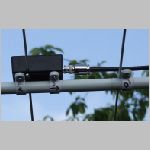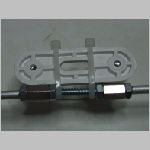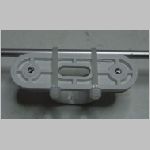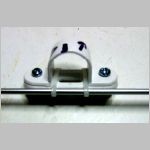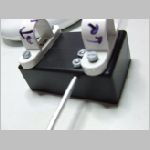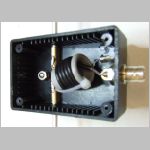Cheap and simple VHF-/UHF-Yagis
by DK7ZB, extreme lightweight for portable use
|
The dimensions given for the Yagis in this
chapter are for non-conductive booms like PVC. If the elements are
mounted through or very close to a conductive boom, you need a
proportional correction factor depending on the distance of the
element to the boom. This assembly will cause an electrical
“shortening” of the element, that means it is shorter. This must be
corrected through a corresponding extension of the element.
Günter Hoch, DL6WU, has found the correction factor for mounting
through a conductive boom by a
complex series of experimental measurements with the following
formula:

BC = 100%-factor (in wavelengths), BD = Boom diameter in wavelengths
However, this factor is somewhat inaccurate and it is only an
approximate value because it depends on the reactance of the
respective element. The shorter directors have an increasing
capacitive reactance and would correctly require a
different correction value. To avoid these problems completely, you
should assemble the elements so that no correction is necessary. The
table gives the 100%-factor for 144 MHz, for 70 cm double the values. Other mountings see the picture below.
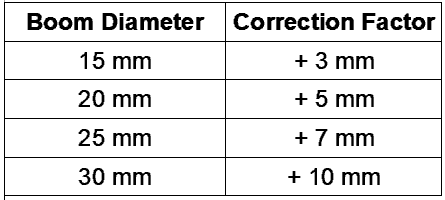
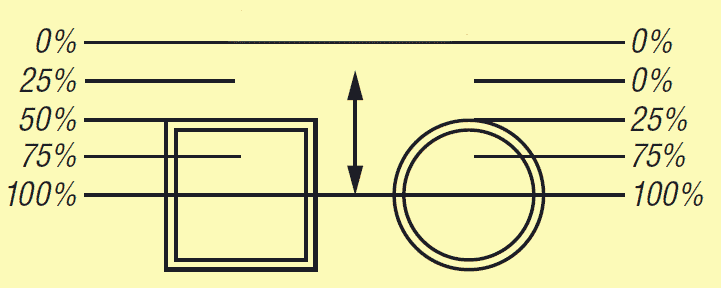
|
|
What you can do with these leightweight
constructions you see on the picture.
Bob, ZL1RS with
4x5-El.-1,50m-50-Ohm-Yagis
as A35RS on Tonga
Link to his page with a lot of informations about
his expeditions:
ZL1RS
|
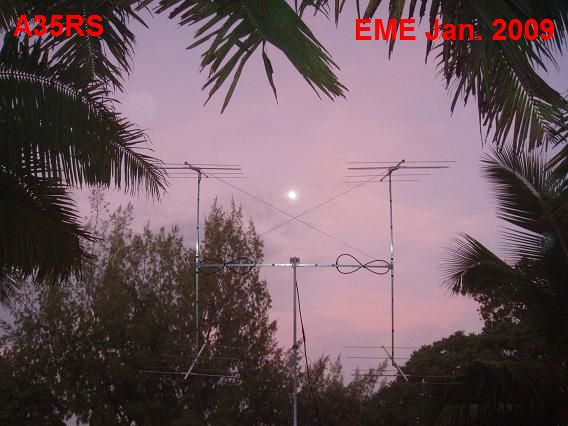 |
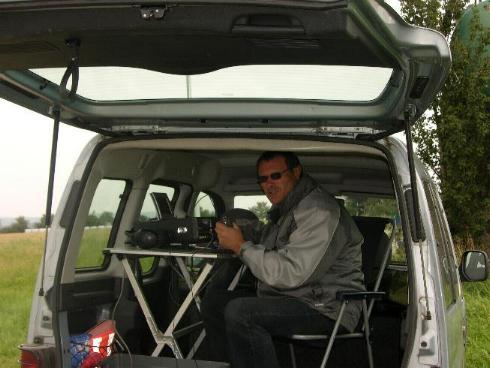 |
My "shack" for portable operation. I use the
2x6-El.-50Ohm-Yagi for 2m with 2,50m boom an 2x10-El.-28Ohm-Yagi for 70cm with 2m
boom.
The mast has a height of 8m and can be erected easily without any
helpers.
A 400W-AC-generator or 2x100Ah lead acid batteries gives the power
for several hours of operation. I like short regional contests on
VHF/UHF. |
|
These Yagis are constructed
with cheap leightweight materials for electric installations and you can mount
and dismantle them without any tools. The boom is made of
PVC-tubes with 16mm, 20mm or 25mm diameter, the element holders are the clamps for
these tubes.
A little bit more weight, but
more stable construction is possible with 16x1mm and 20x1,5mm aluminium tubes as
a boom. If you build up the leightweight 28-Ohm-Yagis, you must ground the coax
socket to the boom. For the construction look to the "DK7ZB-Match".
The elements are made of
Aluminium-welding-rods (material AlMg3) with diameters of 4mm, 3,2mm or 2,4mm.
Normally this rods are sold in packages with 1kg (Price in Germany 8-12
Euro/kg). You can use 6x1mm tubes, if these rods are not available for you.
|
| Diameter |
Weight/piece
1m |
Pieces/1kg |
The different elements |
| 6x1mm |
42g |
23 |
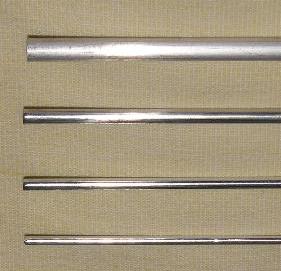 |
| 4mm |
34g |
29 |
| 3,2mm |
21g |
47 |
| 2,4mm |
16g |
62 |
|
As a
mast you can use a telescopic fishing rod or thin Aluminium-tubes for tents. Pse
look for all pictures with the mechanical details, may be you find your own
solution with parts available in your country!
|
|
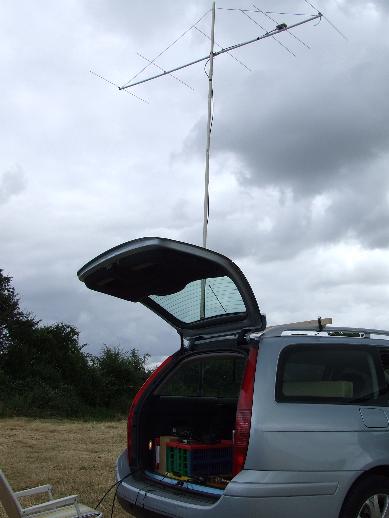
|
The 6-Ele.-Leightweight-PVC-Yagi of Paul, G3YDY
G8BVG/p in
JO01HP
Winner of the British Backpackers
Championship 2008
In this QRP-contest max. 10Wtts are allowed,
ODX 718km with DL0GTH |
Details from Paul (G3YDY) of
his Yagi-construction. Click on the thumbnails!

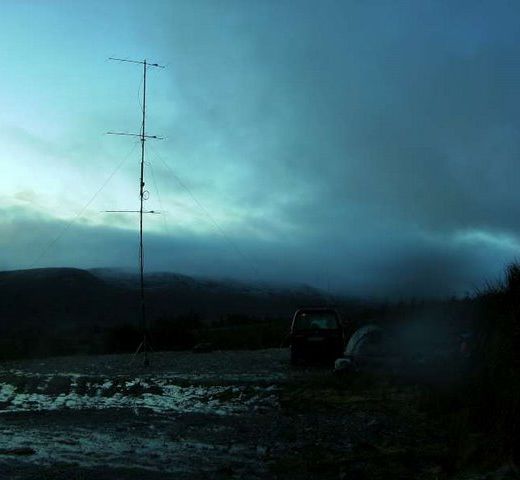 |
4x6-El.-Lightweight-Yagis during the
BCC-Meteorscatter-Contest in the Geminids 2008 in a rare square.
One man operation with car, tent and 0°...
Dirk,
EI/ON5GS/p
in
IO55XC
For more pictures click the LINK |

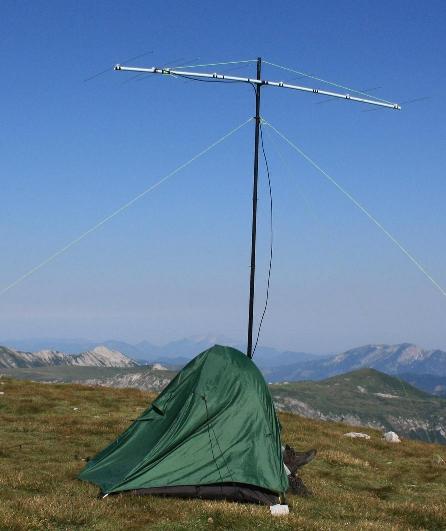 |
OE/OL1D
with the 7-El.-2m-Yagi
in the Alpe-Adria-Contest 2009
Heukuppe - Rexalpe
2007 m ASL |

|
All is possible with these lightweight
constructions:
The portable satellite Yagi
("arrow-style") for 2m and 70cm, built
by
Adamos, SV2KGA |
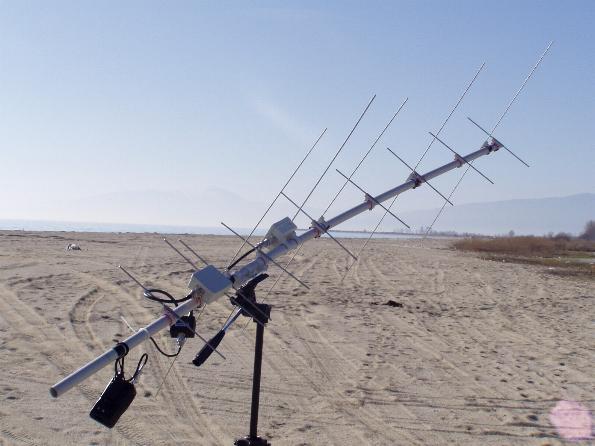 |
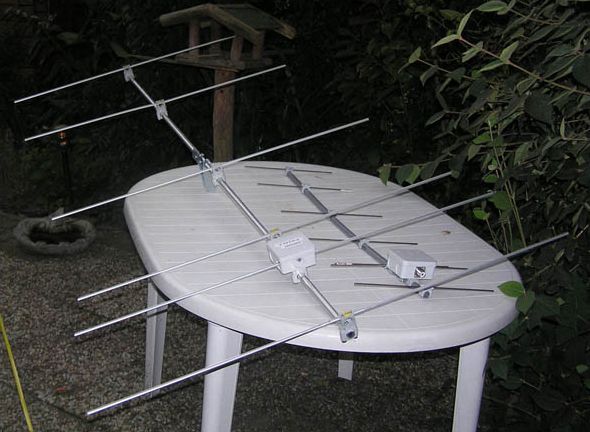 |
Lightweight-Yagis for 2m and 70cm built by
Jos,
PA3ALF
Details on his page:
Link
to PA3ALF |
Max. mounting lengths of
the PVC-tubes for the boom:
| Diameter |
Without additional
support |
With Kevlar rope above
the boom |
| 16mm |
max. 1,00m |
max. 1,50m |
| 20mm |
max. 1,50m |
max. 2,00m |
| 25mm |
max. 2,00m |
max. 3,00m |
Max. mounting lengths for the
boom with aluminium-tubes:
| Diameter |
Without additional
support |
With Kevlar rope above
the boom |
| 16mm
x 1mm |
max.
2,50m |
max.
4,00m |
| 20mm
x 1,5mm |
max.
4,00m |
max.
6,00m |
The parts for a 4-El.-Yagi with 1m Boom

The 2m long 6-Ele.-Yagi has a boom of two pieces, therefore
no part is longer than 1m
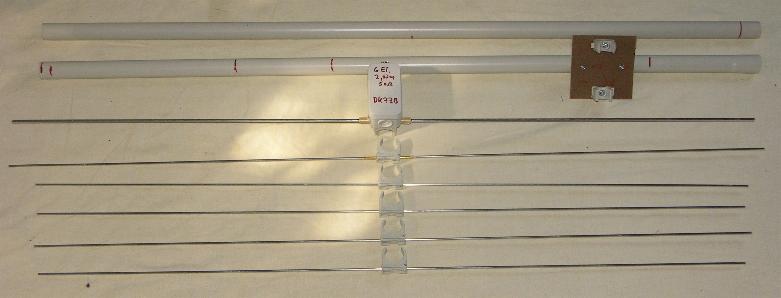
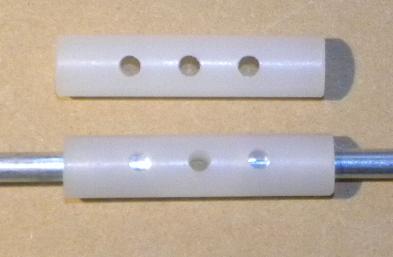 |
The most Yagis have an
impedance of 50Ohms and are fed with a lambda/4-choke for 2m and a
3/4-lambda-choke for 70cm. You can use the same chokes for 2m and 70cm! The
length of the coax-cable should be about 40cm (not critical!). The
radiator is a stretched dipole with 10-12mm insulation between the two
parts. The insulated part is a piece of glass-fibre (from a broken tent of my
children!). Commercial Polyamid-parts (left)
available at www.nuxcom.de.
For the 28-Ohm-types with
aluminium boom use the DK7ZB-match with a grounded coax-socket to the boom
The given length in the tables are from tip to tip. The Yagis are
optimized for 144,3MHz to use them for SSB/CW.
|
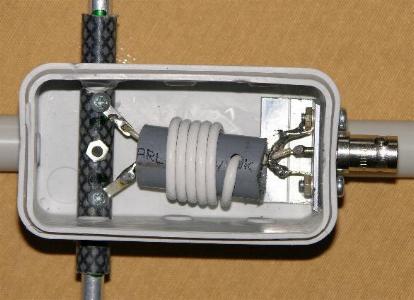 |
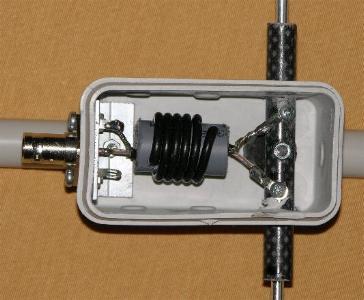
|
|
The radiator box with
RG-188-PTFE-coax (for 2m and 70cm), 250Wtts on 144MHz and 100Wtts on 432MHz
|
Another box for 2m with
RG-174, 100Wtts on 144MHz
|
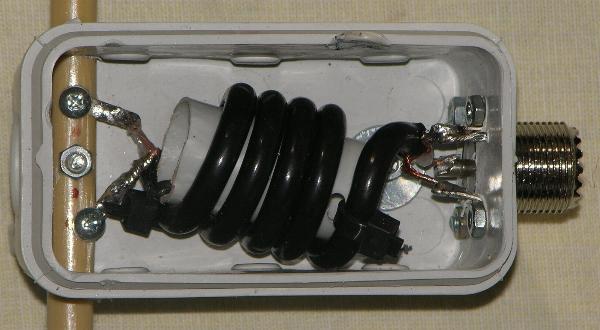
The choke with ca. 40cm RG-58/MIL (use good quality!)
handles 200W SSB/CW on 144MHz
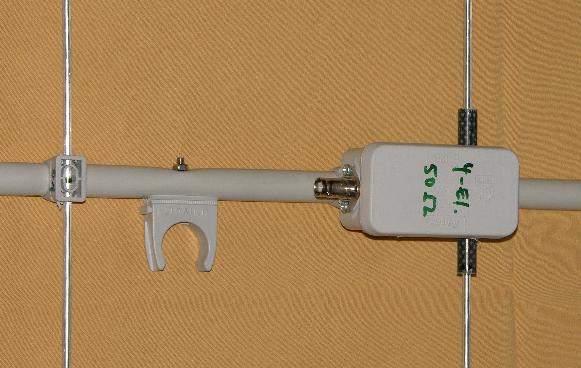
The middle part of the 4-El.-2m-Yagi with
the boom clamp

This picture shows the boom from the side
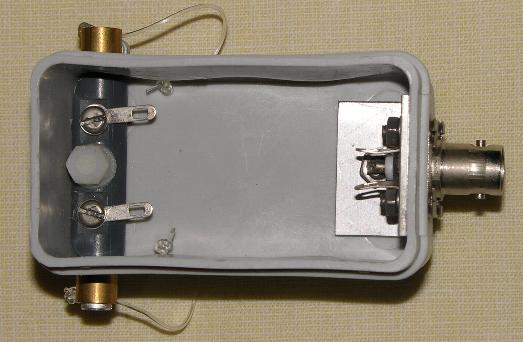 |
These pictures show the genious construction of the
radiator-box for a dismantable Yagi with 4mm-rods. The photos are better
than a lot of words.
Construction by
Rolf, DH6RM |
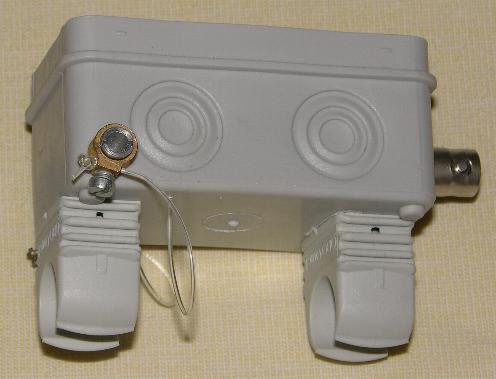 |
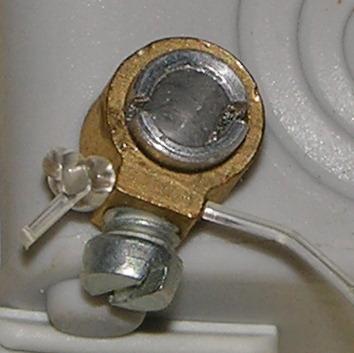 |
|
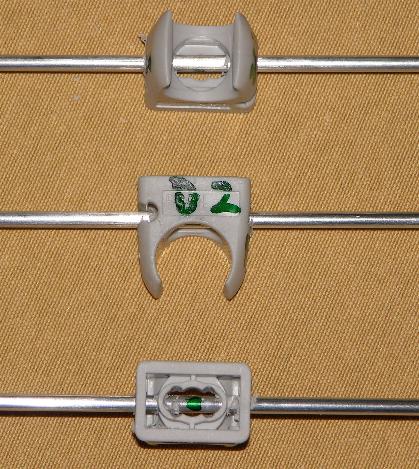
|
Mounting of the elements
Drill a hole (3,9mm for 4mm-elements or
3,1mm for 3,2mm-elements) and push the elements through the holes. Ready!
If the elements are not fixed enough on
the boom,
put two windings of PVC-tape around the boom and clip the clamps then on the
boom. |
|
A little bit more difficult is the reflector,
because it is longer than 1m, the welding rods have exactly 1m length. Make two
pieces of 50cm length and take an aluminium tube 6x1mm. Then you can drive in
the 4mm-rods with a hammer.
|
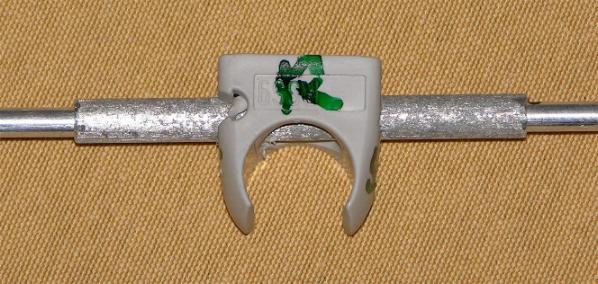
|
The reflector with 3,2mm-rods, the middle part is a brass tube
of 4mm. Here I used a 16x1mm-aluminium-boom. To
avoid corrosion problems between Al und Cu the middle part should be coated with
a colourless paint. Keep in mind that these antennas are only intended for
portable use!
|
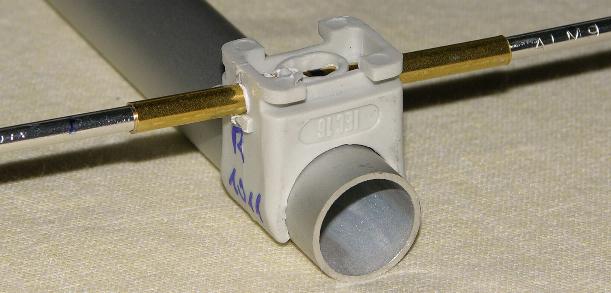
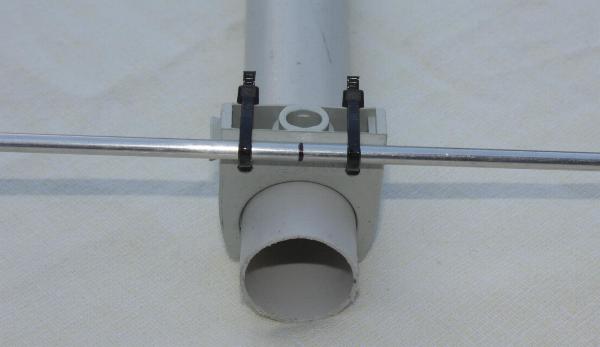 |
The easiest way to fix the element is to drill two
holes into the clamp and fix it with a cable tie. Use black ones for the
UV-stability- |

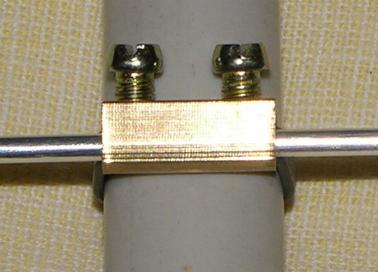 |
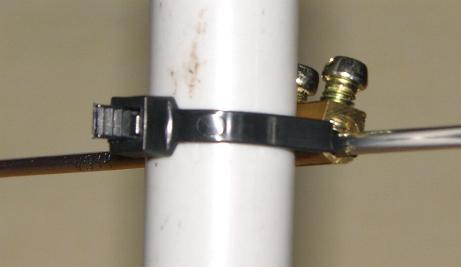 |
|
Another simple mounting method for the elements,
here with 2,4mm-rods
With this elements and two fishing-rods mounted
back to back a long boom for portable operation is possible |

|
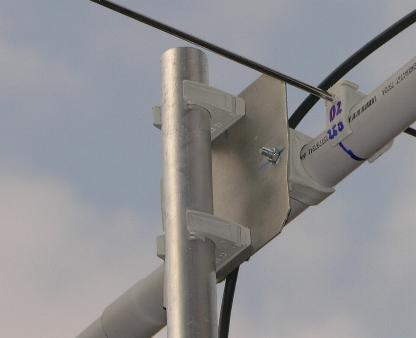
|
The bracket for the
mast-boom-connection for the longer booms is made with a piece of
aluminium and four clamps: |
|
These are mounting parts used by
Alfred,
PA7AL |
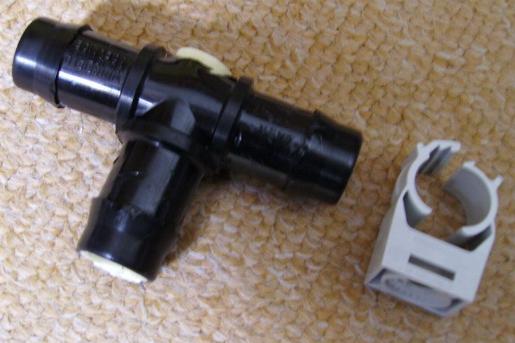
|
|
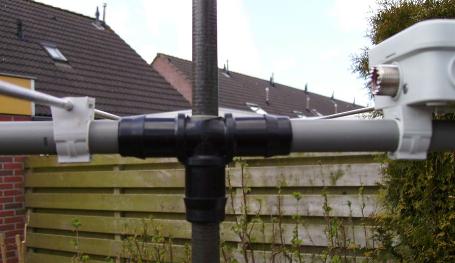
|
The mast to boom connection by
PA7AL |
|
Mounting with Heyco-snap-in-bushings
(available at NUXCOM)
for 15x15- or 20x20-mm-square aluminium booms
The example below shows 4-mm-aluminium-welding rods
through 3,2-mm-bushings. When using this method with mounting through a
conducting boom (round or square) add the following lengths to each
element (reflector and directors):
15-mm Boom: 1,5 mm for 144 MHz, 3 mm for 432 MHz
20-mm-Boom: 2,5 mm for 144 MHz, 5 mm for 432 MHz |
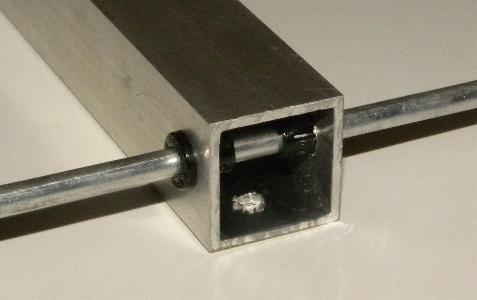 |
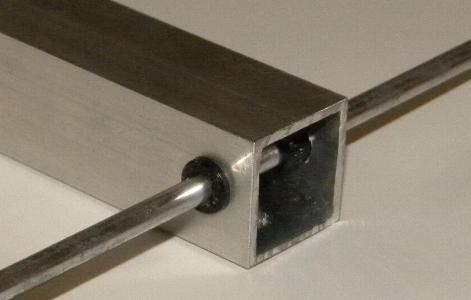 |







